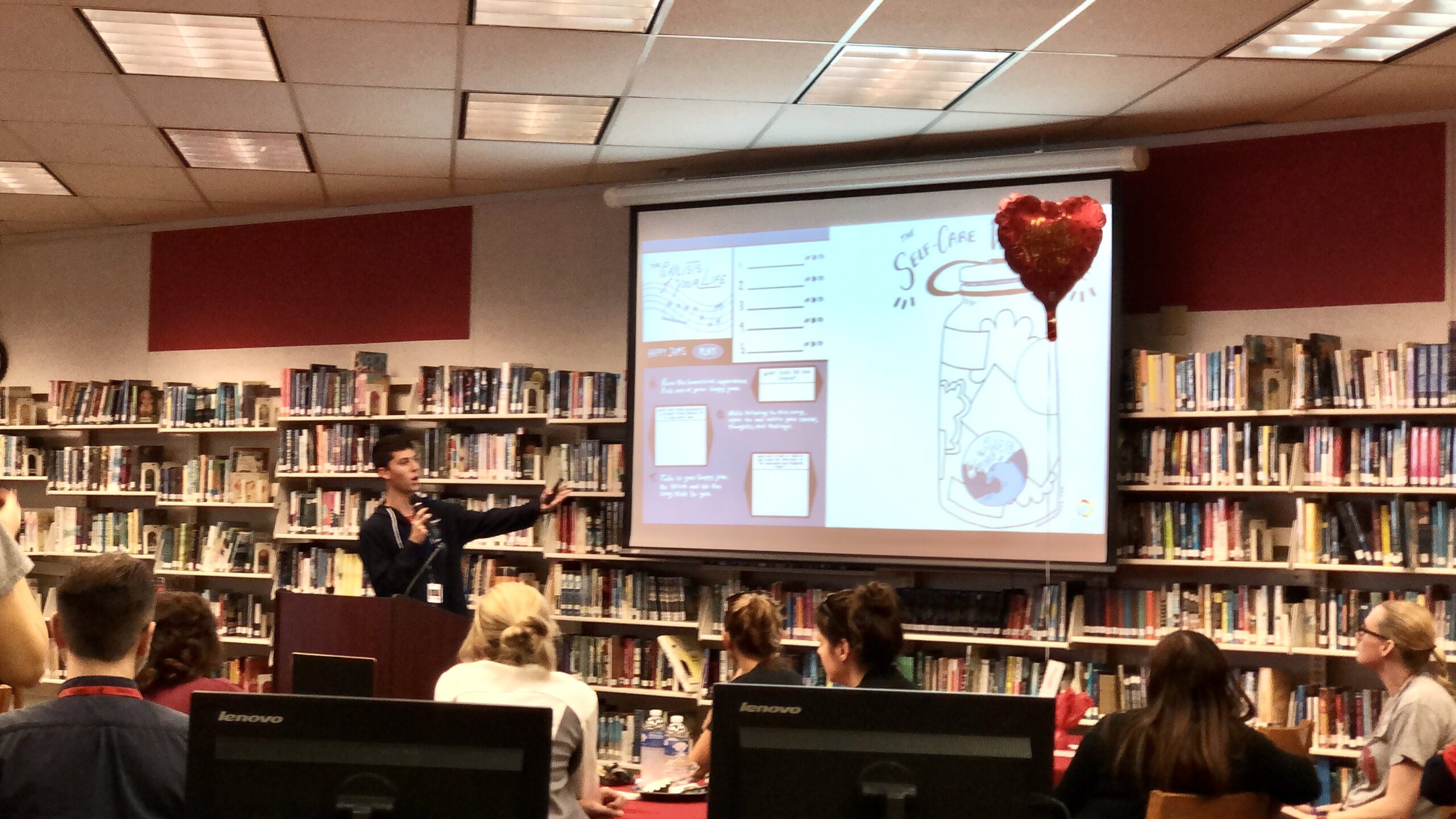Today I had to teach my own teachers, the ones that I see every day, the ones that I have had or will have in the future, and although I have taught many groups of adults before, this was more terrifying than the TED talk I gave last year, because I know these people, and I wasn’t sure how they were going to take what I had to say. I always try to deliver my message with kindness and humor, so hopefully that came across.
People always ask me what advice I have for parents or teachers that want to teach their kids about mindfulness or how to de-stress and regulate their emotions. And I’m not trying to be rude or mean when I say that they have to walk the walk. Think about it, if kids are practicing daily, but the adults in their lives aren’t, then it’s pretty hard to create significant change. First of all, the behavior isn’t being modeled, so it’s more of do what I say not what I do, and secondly, if the parent or teacher is always stressed out, or always upset, or screaming, or negative, or sad, then that will permeate the environment, and make it more difficult for the kids around that adult to get into a positive space. I tell adults the same thing that I tell the kids, which is just take 5 minutes every day for some self-care, and that may mean breathing exercises, or listening to your favorite song, or playing golf, or looking in a mirror and repeating affirmations, or doing a calming visualization, or any number of other things.
Often I’m asked to not only teach groups of kids, but also adults, and you may think that I would teach them differently, but actually, I don’t. I teach them the same. There are many different ways to practice mindfulness and learn to understand, accept, and control emotions. There’s a misconception that you have to be sitting down on the floor cross-legged with your hands in a certain position, your eyes closed, and breathing deep. There’s also a misconception that it’s about only thinking positive or not having any thoughts at all. What it is about is focusing on the present moment, not yesterday or tomorrow, which invites depression or anxiety, and if thoughts come, that’s okay, we accept them, and we release them without judgment, and most importantly, we simply begin again.
One exercise I like to do with kids and teachers is to have them look at each other and notice their differences (eye shape, nose, complexion, color, hair style, etc.) and then take a minute and appreciate the similarities (you both have a body, a mind, a heart, emotions; you both have felt sadness and happiness, etc.). And then they can put their hands on their heart and wish the other person peace and love and let that connection permeate their body. I’ve seen this exercise help with compassion and empathy, and that leads to a deeper understanding of diversity and inclusion.
There’s another exercise I like to do, this one I’ve been doing for years, because kids of all ages can understand this one, and that is the movie theater exercise, because I tell them to picture a screen with all the stressful things in their lives and watch as they disappear one by one, until the screen is blank, and then replace those images with things that make them happy and fill up their cup, like sports, friends, family, art, or whatever, and of course, all the while, they should be breathing, and if negative thoughts enter their mind, they can simply let them float away and disappear from the screen.
Every time I am invited to speak to a group, whether it’s kids or adults, I am honored. I am grateful that they care enough to listen, and that I can maybe be helping even one person, and making this world a little brighter.

